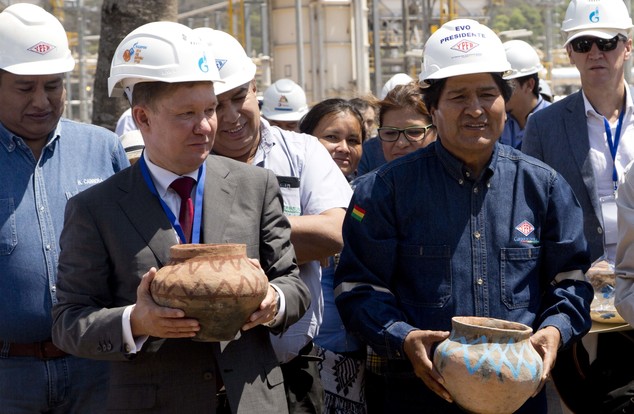La Paz- Russian and Chinese presence in Latin America has recently increased, accompanied by a notable Iranian interest. Over the past few months, Iran has been trying to earn more military and economic gains from the continent located in the western hemisphere.
Iran’s interest in countries abroad is not recent, but what is very new is its pursuit after nuclear manufactures. Latin American affairs experts have gone as far as labeling the case of the continent as that of a Trojan horse staged by Russians, Chinese and Iranians and placed at the United States’ proximity.
Recent discoveries of uranium plants in Bolivia and Venezuela were international eye openers showcasing the chase led by countries such as Iran, China and Russia for the naturally occurring fissile isotope which is necessary for the construction of weapons of mass destruction.
Countries like Bolivia also strive after working hand in hand with nations such as Russia and Iran to develop in nuclear fields, given that the abovementioned countries have a number of experts specialized in producing enriched uranium.
Nuclear power plants use uranium for fuel. One type of uranium atom – (U235) – is easily split to produce energy. U235 makes up less than 1 percent of natural uranium. To make fuel for reactors, this natural uranium is “enriched” to increase the U235 to between 3 and 5 percent.
Bolivia, aims at employing the help of other nuclear-experienced nations to build and establish its very own national institutions and power plants.
Over the years preceding the signing of the highly controversial Iranian nuclear deal, Tehran had received countless criticism and accusations for hunting down uranium in South America.
Underprivileged in the area of nuclear management and establishment, countries like Bolivia and Venezuela trade-off uranium to the Tehran regime in exchange for training and aid in establishing centers dedicated to nuclear empowerment. Many states have issued reports on Iran’s unruly behavior which contrasts with the internationally recognized non-proliferation regime.
Executive Director of the Center for a Secure Free Society (SFS) and co-editor of Iran’s Strategic Penetration of Latin America Joseph M. Humire says that he expects that Iran has indeed secured Bolivian uranium, despite the Latin country’s denial.
According to Humire, Bolivia has an estimated 22 plants for uranium extraction.
In Bolivia, it has been reported that there are no fewer than 145 accredited Iranian diplomats living in the Andean nation. A number that far outweighs their overt commercial or diplomatic interests with the Plurinational state.
The sophistication by which Iran has manipulated cultural aspects of Latin America, has allowed it to gain tremendous influence in the region. It is this form of strategic maneuvering that enabled Tehran to grow exponentially from six embassies prior to 2004, to close to double that (11 total) as of 2009, said Humire.
Once these embassies are established, a series of mosques and pro-Iran cultural centers begin to proliferate the targeted and surrounding countries to expand their “eyes and ears” in Latin America.
Under the guise of commercial and cultural exchange, these embassies serve as conduits for procurement and acquisition activities, many of which are illegal and violate international sanctions. But they also serve as bases for Iranian intelligence operatives who immerse themselves in local societies.
